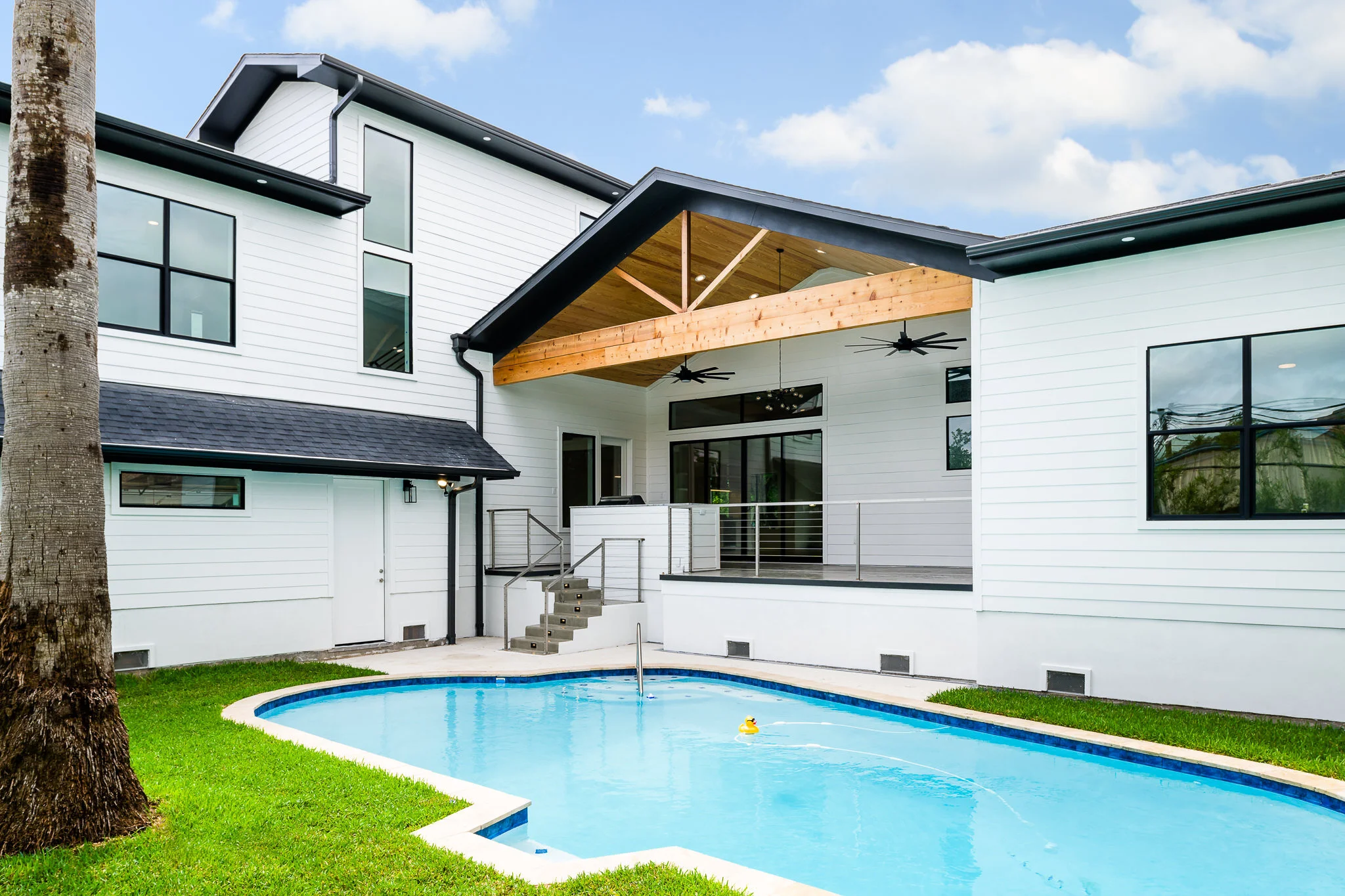In the thick of summer, putting in a pool might sound enticing. But unlike many other cities where building one is fairly straightforward, in Houston – with its frequent flooding events – installing a pool can mean some extra legwork.
For homes located in a flood zone, an area that’s more prone to flooding from rainfall or storm surges, getting your pool approved can take longer than you might expect and it’s a likelihood you need to plan for. There are a few reasons why. First though, you should understand how flood zones work.
Layers of review
Inside flood zones are areas called conveyance zones. These are typically in the so-called 100-year floodplains, those areas expected to see a flood event every 100 years. In conveyance zones, water should flow across the land, or convey rainwater or storm surges from where they fall to the nearest river or other body of water.
In these areas, it’s important to build above the floodplain to keep yourself and your property safe and to allow for more land where water can soak into the ground. Your structure must also inhibit the flow of water as little as possible. Your property will be scrutinized for this, and you may need to add an area to hold water – a detention area – or provide other ways for the water to flow through your lot.
If your home lies in area like this, you’ll need Drainage and Mitigation Plans from a civil engineer before putting in a pool. The plans must be reviewed by the Structural and Health Departments and by the city’s Flood Management Office and Storm Drainage Office. Because the latter two offices are understaffed and overworked, it could take a few months to have your plan for a simple pool reviewed. What’s more, the Flood Management Office must inspect the work. Getting on their schedule can be difficult.
The City of Houston lists basic requirements for submitting a plan for a pool on its website. In addition to the city’s minimum requirements, you’ll also need the Drainage and Mitigation Plan and a Topographical Survey if you’re in a floodplain. Outside a floodplain, a boundary survey will suffice.
A trusted contractor
Once your designer completes plans for your pool, your contractor should pay the plan review fee, which is about $90, and submit plans online for review.
In our experience, plan review takes a minimum of two weeks, with pools in the flood zone often taking twice as long as that, if not longer. Unfortunately, your contractor is at the whims of the city – they can’t do anything to speed up the process. However, an experienced contractor will have fewer mistakes with the first submission, making the process as smooth and quick as possible.
Once the city approves your plans, your contractor will pay the permit fee, which runs at around $205 and up, with an additional $370 for pools in the flood zone. Only then can your contractor start working on your pool.
If you’re interested in looking into building a pool at your existing or new home, start by finding a trusted contractor and make sure they have experience building in Houston and in a flood zone. It’s worth asking if they know the additional requirements before you get started. If they don’t know them off hand, chances are they may not be as experienced as they claim to be working in flood zones.
As you start planning for your pool in a flood zone, you’ll also want to prepare yourself for the additional costs. Added costs of building a pool in a flood zone include:
· Engineer Plans: $500-$3,000
· Permit Fees: $370
· Topographic Survey: $750-900
What about the water?
Once your pool is finished, know that when you fill it for the first time, you’ll be using a lot of water. A big portion of what a homeowner normally pays for water is actually for sewer disposal of the water and other city services.
But when you fill your pool, you’re only using the water portion of the bill – no water is being disposed of – and you’re therefore due a credit to your water bill for that month. You can apply to the city for your Swimming Pool Credit.
From our experience, the process of getting your credit is not without its hiccups, and it often requires a few reminders to the city. So don’t be shy about following up.
Building an open-air extension in a flood zone?
You might also consider installing a separate irrigation meter just for your pool. This can cost anywhere from $2,000 to $3,000. However, you’ll likely earn that money back in three to five years as you continue to pay only for water and not sewage charges when subsequently topping off your pool. If you’re interested in that option, you can speak to your pool or plumbing contractor about installing a separate water meter.
While building a pool in Houston, and especially in a flood zone, can take a few extra steps and it does come with added expenses, in the end you’ll be happy to have a cool getaway in your backyard that can also add value to your property.







A leaking balcony can lead to costly repairs, water damage, and even structural issues if left untreated. In this guide, we break down the most common causes of balcony leaks—such as poor waterproofing, improper drainage, and structural cracks—and explain how to fix them the right way.